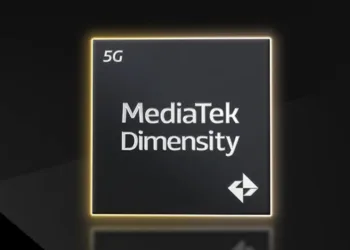The ACM-G10 with up to 32 Xe Cores and the ACM-G11 with up to 8 Xe Cores are the first two Arc Alchemist A-Series GPUs from Intel. The Intel ARC Alchemist GPUs are primarily intended for use on desktop and laptop computers.
According to the information we have so far, the lineup will consist of two GPUs, each of which will have multiple SKUs, each of which will be used in a variety of desktop graphics cards and mobility GPUs.

The TSMC 6nm process node will be used by all Intel ARC Alchemist GPUs, and as we already know, the Intel Xe-HPG Alchemist GPU includes a Xe-Core, which is the 1st Gen ARC lineup’s essential DNA. The Xe-Core is a compute block with 16 Vector Engines (each with 256 bits) and 16 Matrix Engines (1024-bit per engine).

Each Vector Engine is made up of eight ALUs, for a total of 128 ALUs per Xe-Core. The Xe-Core also has its own dedicated 192 KB L1 cache, bringing the total amount of L1 cache on the chip to 6 MB.
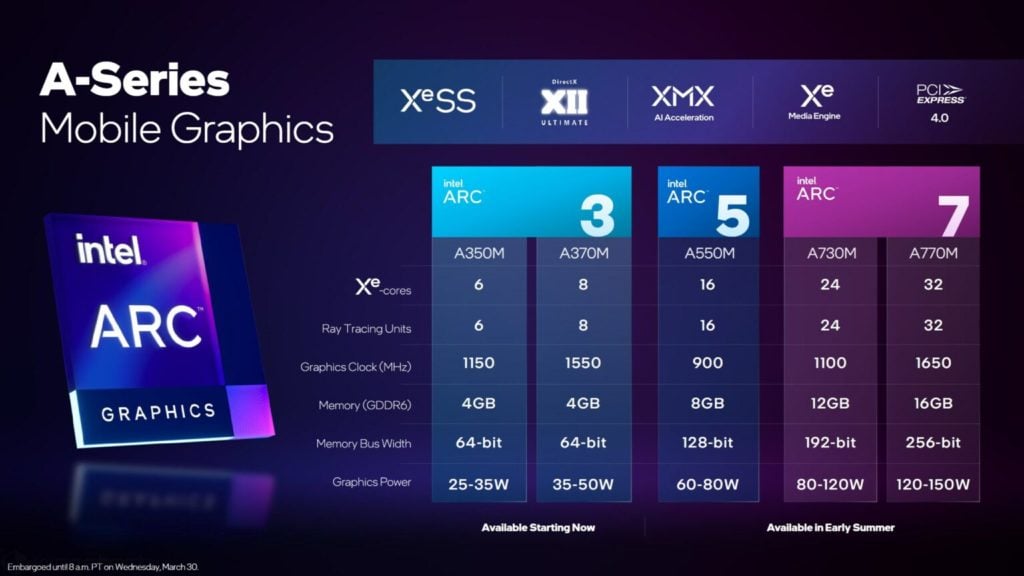
Intel combines four Xe-Cores to create a Render Slice, which contains four Ray Tracing Units, four Sampler Units, Geometry/Rasterize/HiZ engines, and two Pixel Backend blocks, each with eight units. The main GPUs are built up from these Render Slices. The flagship features 32 Xe-Cores, 512 Vector Engines, and 4096 ALUs in an 8 Render Slice configuration. There will be different configurations with 2, 4, and 6 Render Slices, but in this report, we’ll focus on the most important part.
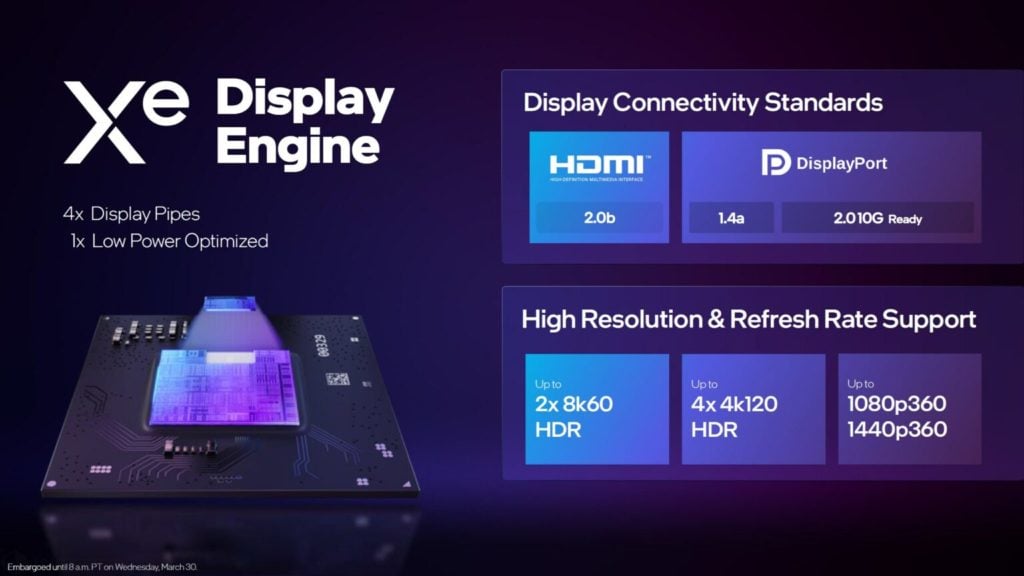
Intel combines four Xe-Cores to create a Render Slice, which contains four Ray Tracing Units, four Sampler Units, Geometry/Rasterize/HiZ engines, and two Pixel Backend blocks, each with eight units. The main GPUs are built up from these Render Slices. The flagship features 32 Xe-Cores, 512 Vector Engines, and 4096 ALUs in an 8 Render Slice configuration. There will be different configurations with 2, 4, and 6 Render Slices, but in this report, we’ll focus on the most important part.

The long-awaited Arc A-series branding, which will feature gaming Arc 7, Arc 5, and Arc 3 GPU segments, has been confirmed by Intel.
So far, we know that Intel’s brand name is Arc and that the first graphics range will be dubbed Alchemist and will use the Xe-HPG (High-Performance Graphics) graphics architecture. Now, the Alchemist name may sound a little too geeky, but it’s a good addition compared to NVIDIA and AMD’s previous codenames, Scientists & Star. Intel also has other codenames detailed that they aim to launch in the future, in addition to Alchemist. Continue reading to learn more about it.
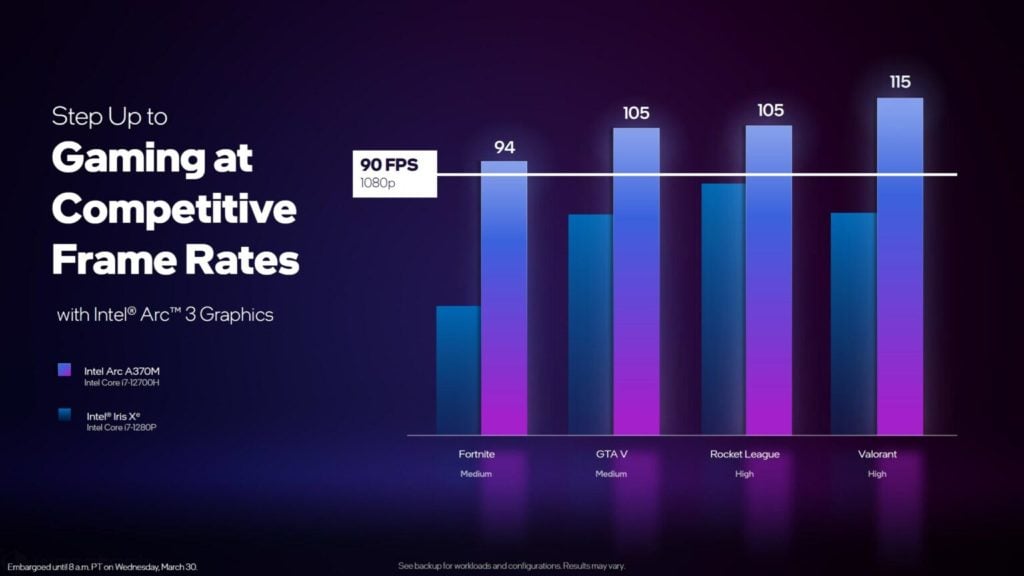
Intel will debut its mobile Arc A-series graphics lineup first, with a total of five new products in each segment, as planned. The ACM-G10 GPU will be used in the Intel Arc 7 and Arc 5 lineups, while the ACM-G11 GPU will be used in the Arc 3 lineup. All of these GPUs have the same set of features, including support for XSS, DirectX XII Ultimate, XMX acceleration, Xe Media Engine, and PCIe Express 4.0, among other things.
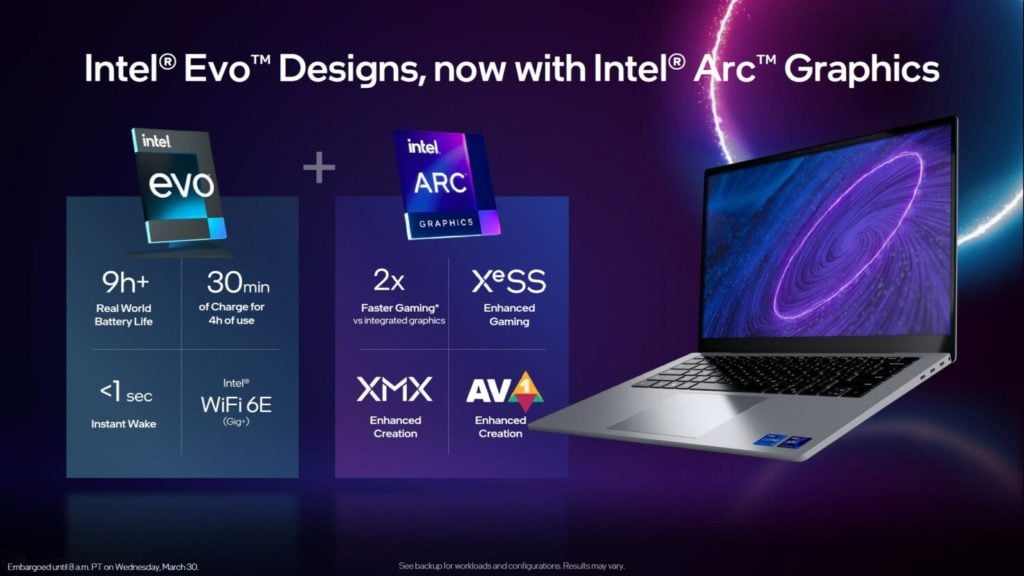
The Intel Arc 7 range will contain two models, the Arc A770M and the Arc A730M, both of which will use the flagship ACM-G10 GPU. The Arc A770M, the top-end model for mobility platforms, will include the entire ACM-G10 configuration, which includes 32 Xe-Cores for 4096 ALUs, 32 ray tracing units, a graphics speed of 1650 MHz, up to 16 GB GDDR6 RAM with a 256-bit wide bus interface, and a TDP target of 120-150W. This is comparable to the Max-Q version of the GeForce RTX 3070 Ti.

For the time being, the Intel Arc 5 portfolio will only have one option that uses the ACM-G10 GPU. It will have 16 Xe Cores (2048 ALUs), 16 Ray tracing units, a 900 MHz graphics clock, 8 GB GDDR6 memory, a 128-bit bus interface, and a TDP of 60-80W. The RTX 3060 Max-Q graphics chip should be the target for this chip.
also read:
Samsung and Western Digital team up to produce their next-generation of ZNS HHDs and SSDs




